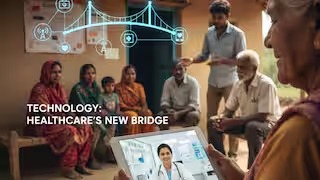Intelligent observability is transforming telemedicine in India by ensuring reliable, real-time digital healthcare delivery, especially in rural areas. By leveraging AI-driven monitoring, platforms can detect and resolve technical issues instantly, reduce latency, and enhance user experience—critical for overcoming connectivity and digital literacy barriers in underserved regions.
India’s telemedicine sector is witnessing exponential growth, with over 30 million teleconsultations conducted in 2025 and platforms like eSanjeevani surpassing 340 million cumulative consultations. However, this rapid expansion brings significant operational challenges, particularly in rural areas where unreliable internet, limited smartphone access, and low digital literacy hinder consistent care delivery. Intelligent observability—powered by AI and real-time system monitoring—is emerging as a game-changing solution to ensure seamless, high-quality telehealth services across the country.
Intelligent observability provides a holistic, real-time view of the entire digital healthcare ecosystem, including network performance, application responsiveness, user engagement, and system stability. Unlike traditional monitoring, it uses AI to analyse logs, metrics, and traces to detect anomalies, predict bottlenecks, and proactively suggest fixes—often before users experience disruptions. This capability is vital for maintaining uptime and trust in telemedicine platforms, especially during peak usage or in low-connectivity environments.
Platforms like Practo, 1mg, and eSanjeevani are increasingly adopting intelligent observability to monitor user journeys, identify drop-off points, and optimise page load times and application latency. By analysing video call quality, chat responsiveness, and post-consultation feedback, these systems gain granular insights into individual patient experiences, enabling targeted improvements.
Notable Updates:
Over 30 million teleconsultations were conducted in India in 2025, highlighting the growing reliance on digital healthcare.
eSanjeevani has recorded more than 340 million cumulative consultations, underscoring the scale and demand for telemedicine.
Intelligent observability enables real-time detection of system issues, such as dropped calls or latency, and identifies root causes like network congestion or server overload.
AI-powered platforms can use natural language queries in over 50 languages to diagnose problems, making them accessible across India’s diverse linguistic landscape.
Observability tools integrate into the software development lifecycle (SDLC), offering actionable insights for developers to enhance app stability and user experience.
Case studies like Halodoc show that full-stack observability can improve app performance by up to 40% and support over 20 million monthly active users.
Mobile-first design, low-bandwidth functionality, and simplified interfaces are being prioritised to improve accessibility in rural areas.
Intelligent observability supports proactive care delivery by shifting from reactive fixes to predictive maintenance, ensuring uninterrupted service.
The technology helps identify underutilised resources and optimise infrastructure, enabling platforms to deliver more care with existing systems.
Agentic integrations allow AI observability tools to communicate with other systems, automating responses and delivering smart recommendations directly into workflows.
By ensuring stable, user-friendly telemedicine experiences, intelligent observability is helping bridge India’s urban-rural healthcare divide and paving the way for a digitally inclusive health ecosystem.
Source: Express Healthcare, Elets eHealth, New Relic

